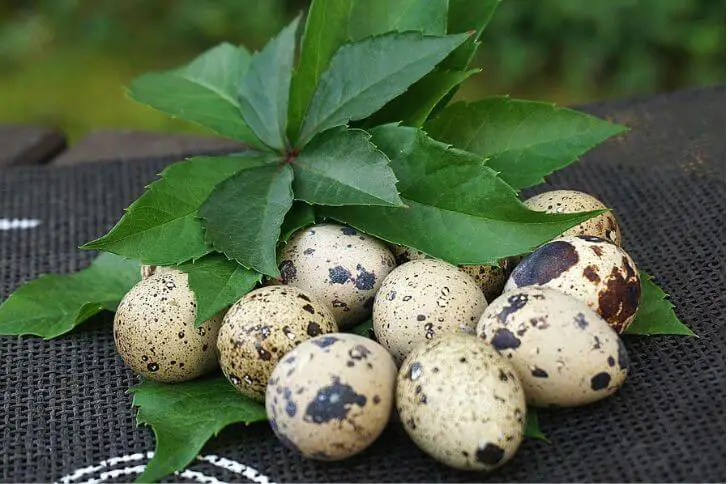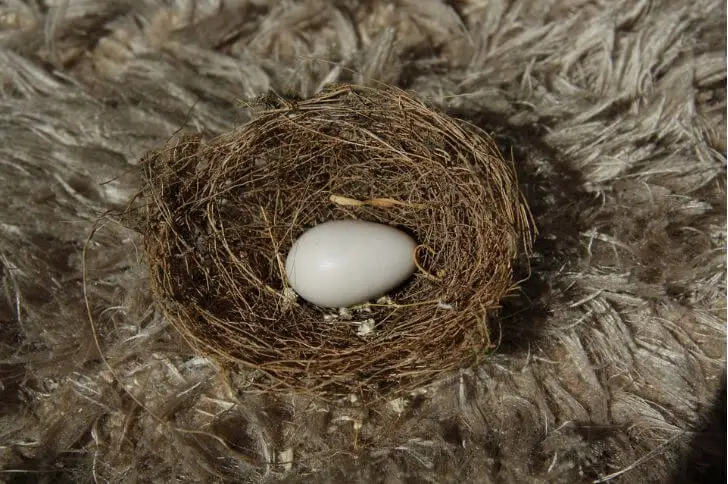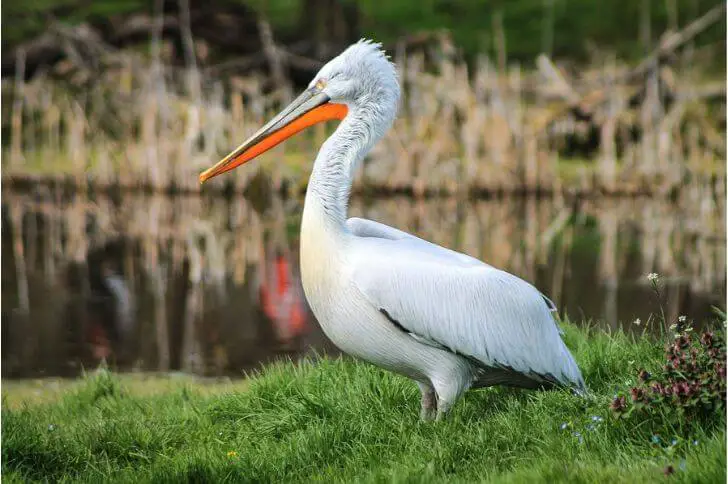Where do blue herons nest?
Blue herons are majestic birds that often inhabit wetlands and coastal areas. They have an impressive wingspan of up to 6.5 feet, allowing them to fly for long distances in search of food. Where exactly do these birds go to nest?
Great blue herons can be found nesting near shallow lakes, rivers, ponds, marshes, and even some beaches depending on the season. They prefer spots where there is plenty of vegetation for them to conceal their nests from predators.
These large American wading birds will typically build their stick nests in tall trees or on the ground. These large structures can measure 20 inches wide and are lined with softer materials like grasses or feathers before the eggs are laid inside.
Typically, female great blue herons weave the nest and this activity lasts anywhere from 3 days to two weeks. Some re-used nests can measure up to 4 feet wide.
What months do great blue herons lay eggs?
The timing of egg laying depends on the geographic location, but generally speaking great blue herons begin breeding in March through may for birds in the north and November through April for birds in the south.
During this period, females usually lay between three to five eggs at a time.Note they are pale blue and about 3 inches in length. The eggs then take about 28 days to hatch. Great blue herons raise 1-2 broods yearly.
Do Herons mate for life?
In the wild, great blue heron pairs do not stay together long-term and usually only remain with their partner until the nest is built or chicks are hatched on average lasting around two months. Instead they will look for a new mate each season but will assemble in the same nesting colony as previous years. Studies have suggested that male great blue herons may use their beaks to express Grief when leaving former partners; however this behavior has yet to be fully confirmed.
What do juvenile great blue herons look like?
Juvenile great blue herons have a mostly gray-bluish body with dark streaks down their neck. Like adults their bills are also long. While they usually stand four feet tall when fully grown, young great blue herons only reach two feet in height at full maturity but still maintain long necks and legs compared to other species of birds.
How big are juvenile great blue herons?
The average size of juvenile great blue herons ranges from two to three feet tall with a wingspan that can reach up to four feet. Their body mass ranges 2-4 lbs.
How old are heron fledglings?
Juvenile great blue herons reach full adulthood after two years, at which point they take on the characteristic steel-blue plumage of an adult. Before becoming adults, these young birds must learn to survive on their own and begin their journey into adulthood.
What do juvenile great blue herons eat?
Their diet consists of primarily small fish, crustaceans, tadpoles, frogs and aquatic insect larvae.Great blue heron babies are fed by their parents; regurgitation. As they age, they learn from adults how to hunt for their food.
Juvenile herons can forage for food on land, including small reptiles like lizards and snakes as well as insects such as grasshoppers, crickets and beetles. They will sometimes even take advantage of an easy meal by stealing from other birds or scavenging carrion from the ground or water surface.
Related Read: Juvenile Little Blue Heron Facts
How long does it take a fledgling heron to fly?
Although they are born with rudimentary flight capabilities, it takes young great blue herons several weeks to hone their skills and gain enough strength to become competent flyers.
During this time, they practice flapping their wings and taking short launches from trees and other perches. As they get better at controlling their wings and balancing themselves in air currents, they gradually increase their flying distance until eventually being able to cover larger distances at greater speed. It usually takes about four to six months for a fledgling great blue heron’s flying abilities to fully develop.
When do herons molt?
Molting is an important part of the growth process for juvenile great blue herons. The first molt usually occurs at about five to eight weeks after hatching and usually takes place during the summer months.
During this time, young herons will lose their downy feathers and replace them with the flight feathers that they need in order to take off and develop full adult plumage. This process can take anywhere from three to four weeks depending on the individual bird’s health and environment conditions.
How long do baby great blue herons leave the nest?
Scientists have observed that young heron chicks often start preparing themselves for life outside the nest by practicing short flights while they’re still very young. This usually happens at around 8-10 weeks of age, when their feathers are just beginning to develop and become stronger.
At this point, it becomes difficult for the parents to keep them in the nest and prevent them from trying out their newly acquired skills of flying. Eventually, most chicks leave the nest at about 3 months old.
What do you feed a great blue heron fledgling?
If you’re lucky enough to have a great blue heron fledgling in your care, you may be wondering what to feed it. Knowing what diet will provide the best nutrition for these birds is essential for providing them with optimal health and wellbeing.
For newly hatched chicks, feeding them an insectivore diet of crickets or mealworms is best. This diet should be supplemented regularly with boiled eggs as a calcium supplement and should also include fresh vegetables like spinach or kale for added vitamins and minerals. As they mature, this diet can transition to primarily fish – small minnows or earthworms – as they reach adulthood.
Where do great blue herons sleep at night?
At the end of a long day of fishing and foraging for food, great blue herons seek out safe places to roost. They typically spend the night perched atop trees or bushes near water sources such as lakes or rivers.
Their ideal sleeping spot should have plenty of foliage around it to provide shelter from predators. Great blue herons usually stick with their chosen roosting spot until they are disturbed by people or animals passing nearby. During cold winter months when the temperature drops below freezing, these birds tend to prefer more sheltered spots like caves or tall buildings so they can keep warm during the night.
Do great blue herons come back to the same nesting spot?
Studies have found that while some pairs will return to the same area every spring, others may move around or even travel hundreds of miles away over winter. It depends largely on the availability of food sources, as these birds need plenty of fish to feed themselves and their young. If a particular site no longer has an adequate food supply, they will look elsewhere before settling down to nest again.
What do you do if you find a juvenile great blue heron?
Finding a juvenile great blue heron can be an exciting experience for any bird lover.
First and foremost, assess the bird’s condition. Check to see if the bird appears injured or unwell in any way. If so, contact your local wildlife rehabilitation center as soon as possible for advice on how to handle the situation. The center may tell you how to safely capture the bird and transport it to them for treatment.
If the juvenile great blue heron looks healthy and is not in immediate danger of harm or injury, observe but do not touch it.
What eats great blue herons?
A variety of predators such as raccoons, snapping turtles, hawks, owls and some species of foxes will feed on great blue heron eggs or chicks if given the opportunity. Even adult great blue herons may become prey for large eagles or bobcats when they encounter each other in the wild. In addition to predation from animals in their natural habitat, these beautiful birds may also suffer population declines due to human activities.
Sources:
https://en.wikipedia.org/wiki/Great_blue_heron
Hi, my name is Steve. My friend and I started the spanishbirdguides.com to share our passion with other like-minded people. So, if bird watching is your thing, you’ll love this blog. I’ll share what I’ve learnt about both local birds and those found in other parts of the world. Also, I’d love to hear your experiences.


